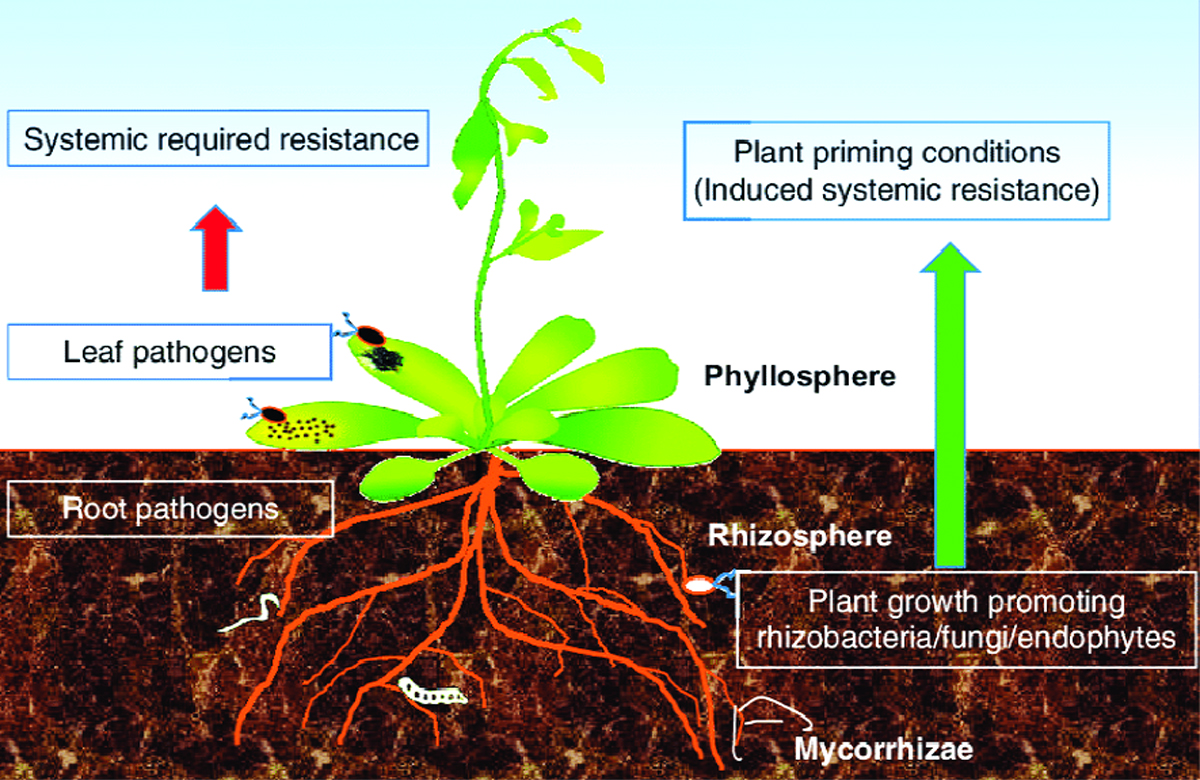Dr.Rehana Akhtar Bijli
The rhizosphere is known to be a hot spot of plant-microbial interactions and a driving force of soil processes. Plant species could affect quantity and quality of carbon resources in the rhizosphere, which would influence the composition and diversity of microbial community in these environments. Different plant species can promote proliferation of different microbial communities by releasing different amount and types of root exudates. Coexistence of multiple plant species may enhance the complexity of soil microorganisms by increasing the heterogenity of root exudates and carbon that are contributed from roots and decomposing litter.
Moreover, plants may directly or indirectly impact soil nutrient availability by influencing soil enzyme activities through releasing extracellular enzymes and altering microbial community that is known to be major contributors of enzyme activities in soil.
‘It has been reported that plants have a major influence in shaping rhizosphere microbial communities. However, the effects of plant species coexistence on soil microbes and soil enzyme activities are less known.
Some studies reported herbaceous plant species coexistence did not significantly affect soil microbial biomass C, but increased microbial functional group diversity index and enzyme activity. The rhizosphere microorganisms are important for plant health and nutrition. Rhizosphere can also be described as a mixture of solid particles and active community of microorganisms, mostly bacteria.
Rhizobacteria are bacteria which colonize the rhizosphere soil and plant roots – they can multiply and colonize all the ecological niches found on the roots at all stages of plant growth despite the presence of other competing microorganisms. The rhizobacteria can have neutral, detrimental and beneficial effects on plant growth.
The plant growth promoting rhizobacteria (PGPR) promote plant growth through direct and indirect actions. Differences in exudate amount and composition are likely to affect microbial community structure because microorganisms differ in their ability to metabolize and compete for different carbon sources. Because microorganisms growing on the plant roots can influence plant growth positively or negatively, a good understanding of the importance of soil and plant factors for microbial rhizosphere communities is needed in order to be able to manipulate microbial populations in the rhizosphere.
Plants invest carbon in the form of various organic compounds thereby influencing the community structure of rhizosphere microorganisms. Different plants influence the structure of soil microbial communities by selecting specific micro-organisms in their rhizosphere.
Soil characteristics are also known to influence the microbial community structure in the rhizosphere. Microbial characterization of rhizosphere provides vital information relating to evaluating soil nutrient status.
Nutrient availability in the rhizosphere is governed by soil properties, plant nutrient uptake characteristics, and interactions of plants, microorganisms, and their surrounding soil environment.Growing evidence suggests that plant species have significant impacts not only on soil’s physical and chemical properties and organic matter quality but also on the abundance and composition of soil microbial community.
It is well established that microbial abundance, composition and diversity can fundamentally alter soil processes that lead to changes in soil nutrient availability.Bacteria and fungi in the rhizosphere, as well as those living endophytically in the roots, are also known to increase plant growth, either by facilitating nutrient uptake and production of plant growth hormones, or through conferring plant protection against pathogens.
Plant growth promoting rhizobacteria are one of the most commonly studied rhizosphere components in terms of direct plant growth promotion and biological control.
Soil microorganisms have an important role in ecological processes such as the nutrient cycling . Soil enzyme activities reflect soil nutrient transformation status, appear higher complexity due to being affected by many soil factors, and are directly much influenced with minor elements, organic matter and available nitrogen. Soil microbial population can act as both sink and source of nutrients.
The microbial biomass and the biochemical processes are influenced to variable extent by both biotic and abiotic factors, in particular to agricultural and land use practices. Hence, soil biological processess can serve as useful index for change in the biology and biochemistry of soils.
(The writer is a Doctorate in Soil Science and presently serving as a KAS officer)


